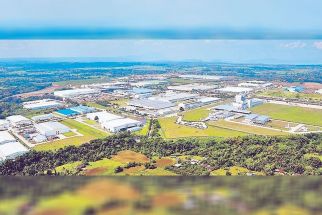Financial sector invests $500 million yearly for anti-money laundering compliance

MANILA, Philippines — Philippine banks and financial institutions spend about $500 million annually to combat money laundering and terrorist financing, Georgia-based Lexis Nexis Risk Solutions said in a report.
In the report titled “True Cost of Anti-Money Laundering Compliance in the Philippines,” Lexis Nexis said anti-money laundering compliance across all Philippine financial services firms is estimated to be at $480 million per year.
The spending largely attributed to larger asset-sized firms with more than $10 billion, while smaller firms with assets of less than $10 billion spend somewhat more as a percentage of assets for anti-money laundering compliance with an average of 0.10 percent compared to the cost of compliance for big firms with 0.05 percent.
“While larger asset-sized firms with above $10 billion account for most of the expenditure, smaller firms spend more on anti-money laundering compliance as a percentage of their assets,” the report said.
Lexis Nexis tapped global market research firm KS&R to conduct the research study.
The paper added larger firms spend more on technology than smaller firms.
“But, given that they employ twice as many full-time employees as smaller firms on average, this results in exponentially higher compliance costs,” it said.
Average compliance costs are spread similarly across labor-consuming activities, with over a quarter involving know your customer (KYC) that consumes labor hours through information collection, list screening, and risk assessment.
Remaining costs involve transaction monitoring, investigations, and overall compliance management.
Furthermore, the use of newer technologies or services is similarly limited across smaller and larger firms, outside of cloud-based KYC utilities.
Larger firms are more likely than smaller ones to use shared interbank compliance databases.
However, while a majority or 73 percent of respondents are able to monitor online transactions in real-time for criminal behavior, only 59 percent is capable of monitoring digital identities, while at least 59 percent of respondents are capable of monitoring sanctions breaches.
“This leaves firms open to added risk,” it said.
The report disclosed that over a third or 39 percent of respondents did not rank business de-risking among the top three key drivers of anti-money laundering initiatives despite the country’s high exposure to the risk of money laundering.
“Although business de-risking is among key drivers for Philippine financial firms, it is under two-thirds or 61 percent who rank it in the top 3. The Philippines’ physical location within international trafficking routes, high volume of remittances from Filipinos living abroad, the presence of terrorist organizations, and regulatory vulnerabilities that were exploited by hackers in 2016 creates an environment susceptible to money laundering,” the report said.
The Anti-Money Laundering Council (AMLC) has led a government-wide effort to bring Philippine regulations up to international standards as set by the Asia Pacific Group, Financial Action Task Force and APEC Counter-Terrorism Working Group.
- Latest
- Trending




























